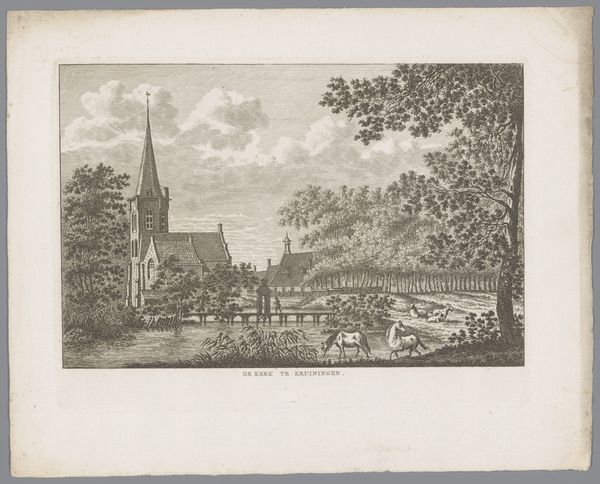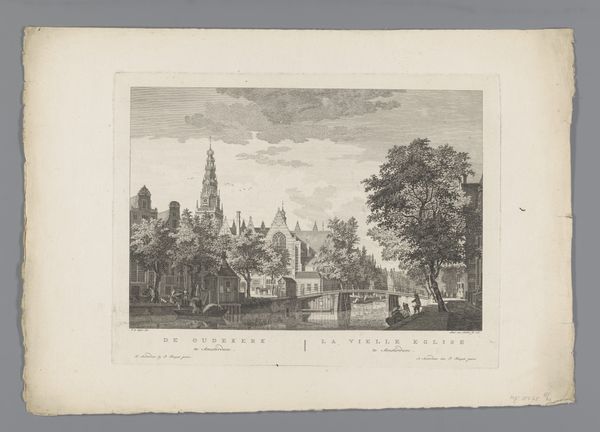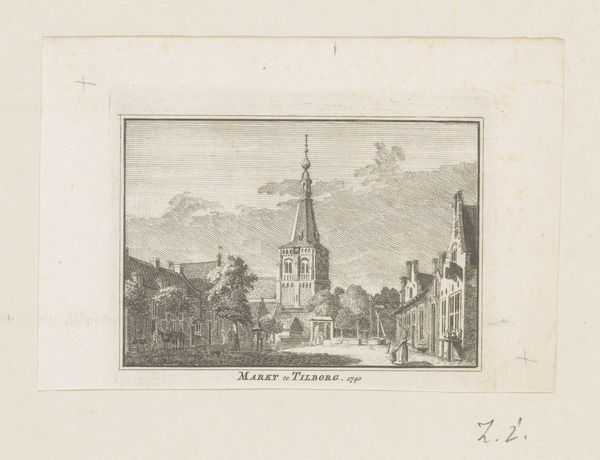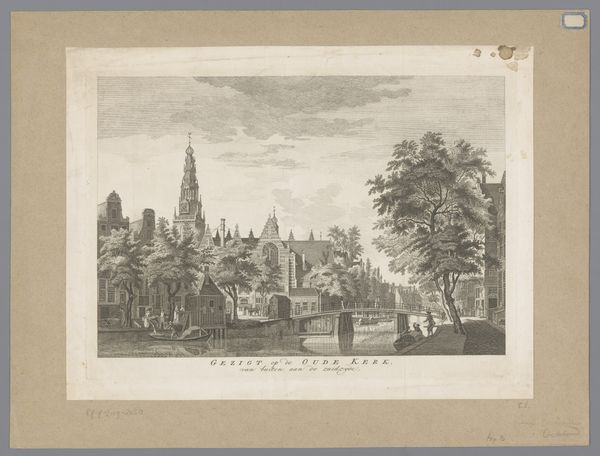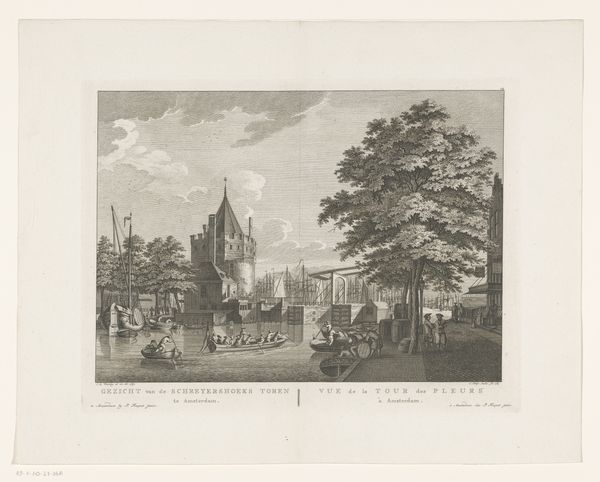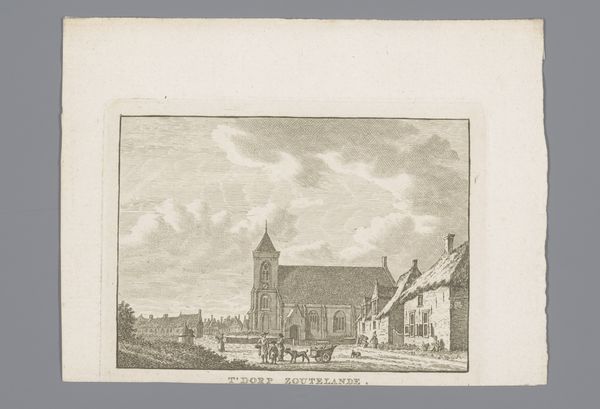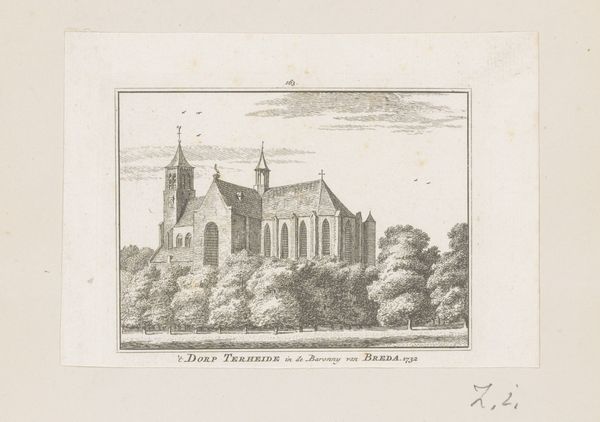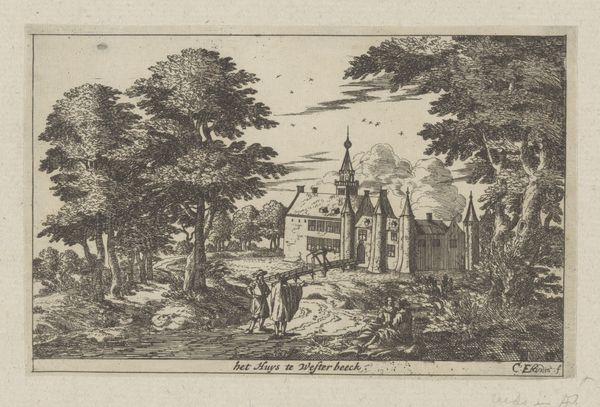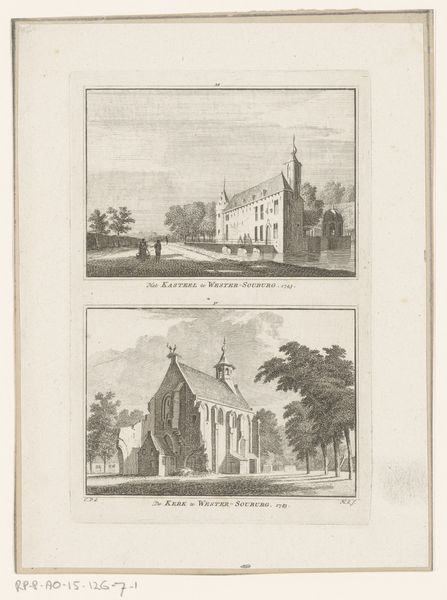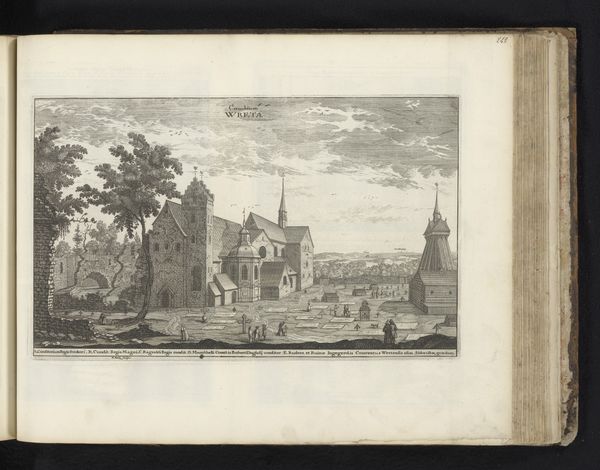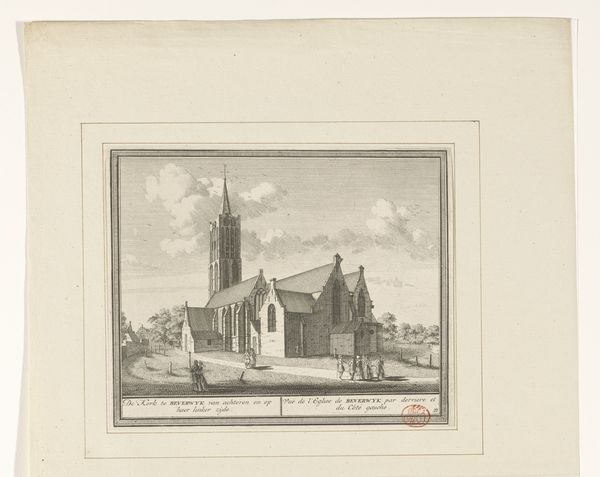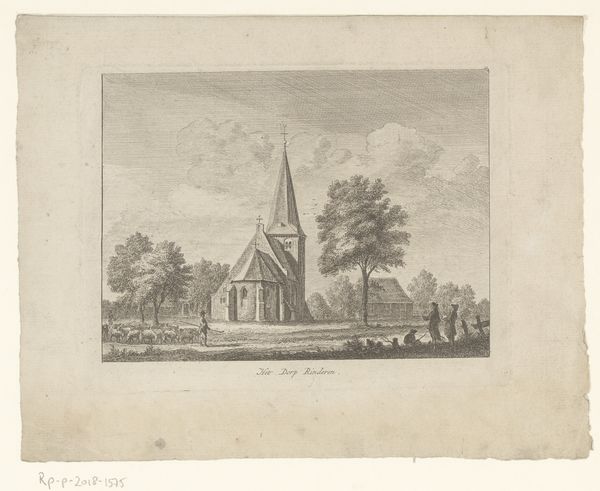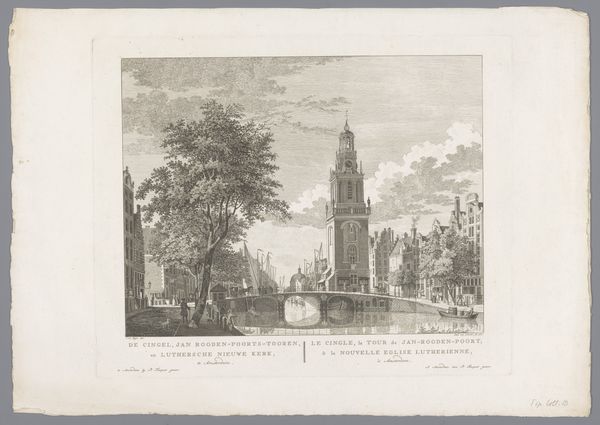
print, paper, engraving
#
baroque
#
dutch-golden-age
# print
#
landscape
#
paper
#
cityscape
#
engraving
Dimensions: height 102 mm, width 143 mm
Copyright: Rijks Museum: Open Domain
Curator: This engraving by Hendrik Spilman, created around 1745, offers us a "View of the Helmond Market." It's part of the Rijksmuseum collection. Editor: My first impression is one of serenity. There's a gentle quality to the light and the meticulously rendered architecture. But I also detect a hint of formality and perhaps even social stratification evident in the townspeople depicted. Curator: Yes, that makes sense when viewing art produced during the Dutch Golden Age, and even in the Baroque period there were traditional social codes for displaying symbolic figures. The spire dominates the landscape. The architectural elements of the church signify established authority. The placement acts as a centering mechanism that connects all walks of life to a central hub in Helmond. Editor: I wonder what stories that market square could tell? We know markets were essential sites for economic exchange. But what about their significance as spaces for civic participation or sites of social unrest? I am certain women experienced more social freedom in this outdoor arena, as opposed to a private residence. Curator: Well, consider the dog in the engraving. Dogs often symbolize fidelity and guidance. In the 18th century, dogs served roles from companionship to working animals. This may point toward broader allegorical meanings within the market scene, possibly referencing human virtues associated with civil society. Editor: I am compelled to reflect on whose perspectives aren't included in this image. We have these townspeople but do we know what social mobility was afforded them in the mid 18th century in the Netherlands? What was Helmond like for people from marginalized groups? Were people of color a common site here? Curator: Spilman has provided more than just an accurate depiction of a place. He's captured the zeitgeist, allowing a modern audience to understand how market activity integrated within a cohesive symbolic frame in mid 18th century Netherlands. Editor: Looking closer at the material texture, especially the use of lines and shading, it is impressive how he conveys such detailed nuances on a modest scale using only black ink. It allows us to see the beginnings of a kind of urbanization in Dutch history, yet leaves us with critical questions.
Comments
No comments
Be the first to comment and join the conversation on the ultimate creative platform.
